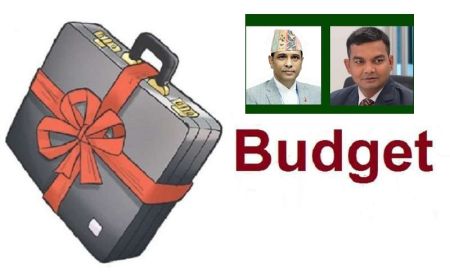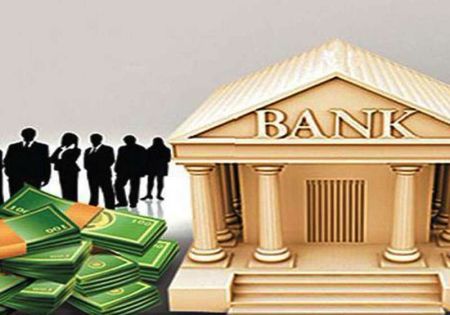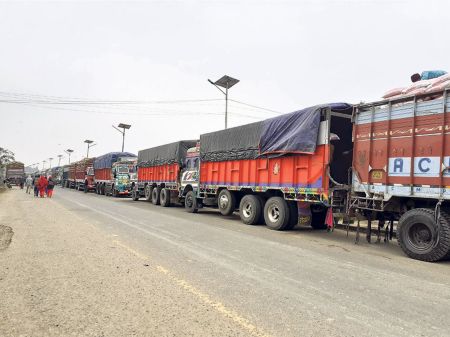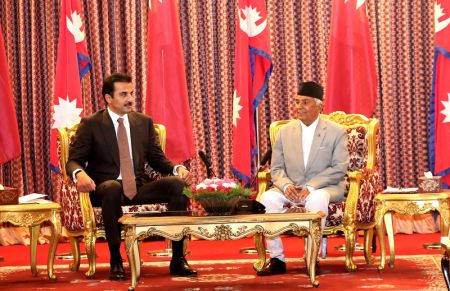.jpg)
--By Anil Shah
A declining exchange rate undoubtedly decreases the purchasing power of income. Moreover, the influences of a shift in the exchange rate can go much beyond just that. It has an influence in other income factors as well such as interest rates, inflation and even capital gains from domestic securities. While exchange rates are determined by numerous complex factors that often leave even the most experienced economists flummoxed, we still need to make sure we take note of all of the influencing factors while computing the value of our currency.
Why do we need to understand the Indian Economy and follow it closely for the fate of the Nepali currency?
We need to do so mainly due to the parity of the INR/NPR which stands at 1:1.60. This parity has since 12th February 1993 remained stable. In addition, close trade ties are also another major factor besides the geopolitical scenario between Nepal and India which makes it imperative for us to understand and follow the developments in the Indian economy as it has a direct co-relation to us.
Impact on the Nepali Consumer & Economy
•Importers/Exporters: Importers will strongly feel the pinch of the falling rupee as they will be forced to pay more rupees on importing products. Conversely, a feeble rupee will be viewed very positively by exporters as goods exported abroad will fetch dollars which in return will translate into more rupees.
•Imported goods/ fuel price goes up.
•Monetary Policy: If the depreciation in the rupee continues, it will increase inflation further. Increased inflation will not allow rate cuts and will not support growth.
•Students studying abroad: Students studying abroad will bear the brunt most owing to the depreciating rupee. Expenses incurred towards the university/college fee as well as the cost of living will shoot up, thereby spelling a huge burden on students.
•Tourism: The depreciating rupee will surely be a dampener if you are planning your holiday abroad. The reverse will be true for foreigners visiting our country, as hotel charges and travelling costs will be lower as a single dollar will acquire more rupees.
•Foreign Investment: Foreign investors will lose confidence and shy away from investing due to the fall in the rupee.
•Overseas Nepalis: Money saved is money earned. Depreciation of the rupee is certainly good news for overseas Nepalis. Those working abroad can gain more on remitting money to their homeland. However, the money spent by recipients is largely towards consumable items which in turn increases demand and adds on to increasing inflation.
•Impact on the Government: A strong dollar is also expected to raise the government’s cost of debt servicing. The government is required to pay
back principals and interest of loans to foreign countries and donors in dollar terms.
Real Effective Exchange Rate (REER)
For INR, the REER index is based on a 6 currency basket which uses 3 years’ money average for calculating the weight of the index taking 2004-05 as the base rate. The 6 currency REEF index in India is calculated using Euro, US Dollars, GB Pound Sterling, Japanese Yen, Hong Kong Dollars and Renminbi. It is believed that the Reserve Bank of India (RBI) intervenes in the currency market to suppress the Rupee if REEF index approaches 105 and props the
Rupee up if REEF gets close to 95. REER above 100 indicates relative strength of the currency. The RBI also takes into consideration the trade weighted basket of other currencies (one basket is 6 currencies and the other is 36 currencies) and adjusts for inflation. Currently, the currency has depreciated with the index level below 100 indicating that weakness is broad based. It is observed that only right policies will prevent the decline and will bring about strength to the INR and vice versa.
Major Factors for Determining the Currency Value
(2).jpg)
1.Differentials in Inflation
As a general rule, a country with a consistently low inflation rate exhibits a rising currency value, as its purchasing power increases relative to other currencies. Those countries with higher inflation typically see depreciation in their currency in relation to the currencies of their trading partners. This is also usually accompanied by higher interest rates. If we observe the inflation rate of Nepal, we can clearly see why the depreciation of our currency is justifiable.
2. Differentials in Interest Rates
Interest rates, inflation and exchange rates are all highly correlated. By manipulating interest rates the Central Banks exert influence over both inflation and exchange rates, and changing interest rates impact inflation and currency values. Higher interest rates attract foreign capital and cause the exchange rate to rise. The impact of higher interest rates is mitigated, however, if inflation in the country is observed to be higher.
.jpg)
3. Current-Account
The Current Account is the balance of trade between a country and its trading partners, reflecting all payments between countries for goods, services, interest and dividends. A deficit in the current account shows the country is spending more on foreign trade than it is earning and that it is borrowing capital from foreign sources to make up the deficit. In other words, the country requires more foreign currency than it receives through sales of exports. A current account surplus is the opposite situation.
4. Public Debt
.jpg) Countries will engage in large-scale deficit financing to pay for public sector projects and governmental funding. While such activity stimulates the domestic economy, nations with large public deficits and debts are less attractive to foreign investors. In the worst case scenario, a government may print money to pay part of a large debt, but increasing the money supply inevitably causes inflation. A large debt may prove worrisome to foreigners if they believe the country in question risks defaulting on its obligations. Foreigners will be less willing to own securities denominated in that currency if the risk of default is higher. For this reason, the country’s debt rating is a crucial determinant of its exchange rate.
Countries will engage in large-scale deficit financing to pay for public sector projects and governmental funding. While such activity stimulates the domestic economy, nations with large public deficits and debts are less attractive to foreign investors. In the worst case scenario, a government may print money to pay part of a large debt, but increasing the money supply inevitably causes inflation. A large debt may prove worrisome to foreigners if they believe the country in question risks defaulting on its obligations. Foreigners will be less willing to own securities denominated in that currency if the risk of default is higher. For this reason, the country’s debt rating is a crucial determinant of its exchange rate. 5. Terms of Trade
This refers to a ratio comparing export prices to import prices where the terms of trade is related to current accounts and the balance of payments. If the price of a country’s exports rises by a greater rate than that of its imports, its terms of trade have favourably improved. Increasing terms of trade shows greater demand for the country’s exports. This, in turn, results in rising revenues from exports, which provides increased demand for the country’s currency (and an increase in the currency’s value). If the price of exports rises by a smaller rate than that of its imports, the currency’s value will decrease in relation to its trading partners.
6. Political Stability and Economic Performance(1).jpg)
(1).jpg)
Foreign investors inevitably seek out stable countries with strong economic performance in which to invest their capital. A country with such positive attributes will draw investment funds away from other countries perceived to have more political and economic risk. Political turmoil, for example, can cause a loss of confidence in a currency and a movement of capital to the currencies of more stable countries.
Taking into consideration the above factors, listed here are some of the perceived threats for the Indian Economy from the recent turn of events:
•Foreign investors are losing confidence and pulling money out of Indian markets.
•Crippling industrial deceleration has pulled down growth
•Weak rupee and widening current account deficit (CAD) is a major concern
•Looming threat of sovereign downgrade by credit rating agencies
The Indian Rupee has depreciated as much as 22.29 per cent this year (August 2012 to August 2013) – and touched a new record low of INR 68.80 against the US Dollar. With this, the Real Effective Exchange Rate index has been now trading below 100. Alongside, the Nepali Rupee has also depreciated by 22 per cent since the last one year - NPR has traded close to 110 against the US Dollar.
Some actions of Central Banks affecting the market
(1).jpg)
There are some ways through which the Central Bank controls the movement of currency by bringing changes in interest rates, relaxing or tightening rules for fund flows, tweaking the cash reserve ratio (the proportion of money banks have to keep with the Central Bank) and selling or buying dollars in the open market. The Central Bank also fixes the statutory liquidity ratio, that is, the proportion of money banks have to invest in government bonds, and the repo rate, at which it lends to banks.
While an increase in interest rates makes a currency expensive, changes in cash reserve and statutory liquidity ratios increase or decrease the quantity of money available, impacting its value.
In the modern economy, governments print money based on their assessment of future economic growth and demand. The purchasing power of the currency remains constant if the increase in money supply is equal to the rise in Gross Domestic Product and other factors influencing the currency remain unchanged.
Earlier, most countries had fixed exchange rates. This system has been abandoned by most countries due to risk of devaluation of currencies owing to active government intervention. Most countries now adopt a mixed system of exchange rates where the Central Banks intervene in the market to buy or sell the different currencies to control the movement of their own currencies. The capacity building of the Central Banks for intervention must be supported with resources and expertise. The power to intervene in the market also determines the value of a particular country’s currency in the short term. If we take the example of our country we are not even in a position to quote two way rates for USD/ NPR trading and the Central Bank’s open window is available only three days a week to square USD/ NPR positions.
The country’s foreign currency demand and supply is more or less one way - most of the time, banks sell dollars to the Central Bank.
Conclusion
Given the current economic indicators, a reflection on the comparative chart shown and on our country’s economic and political scenario, do we have the wherewithal to intervene in the market and manage our own currency rate is the question that needs to be asked. It seems we might need to concentrate on the required related issues to strengthen our economic indicators and required policies before we derive any conclusions for a plausible future course of action.
Also with all the noise surrounding the depreciating rupee, we must not forget some fundamental facts. Firstly, our major source of foreign exchange is remittance sent by the lowest strata of our economic pyramid, and now the $300 or so one person sends to his/her family is fetching them more rupees. Is that all that bad? And secondly, for a long time now due to our vast trade deficit with India, we are purchasing INR using our USD reserves, which means we are getting more INR for the same amount of USD, and from what I see till date the price of rice, potatoes, lentils and other essential goods that we import from India are remaining quite stable in INR terms. Isn’t that a good thing for us?
Possibly with the right policies in place, in the future we will be in a position to forecast our economic growth and demand and observe which level of USD/NPR rate is supported by our fundamental economic indicators. Currently, the need of the hour is to assess where we are now and what all we need to achieve to be able to forecast the future. The implementation of the policy and the monitoring of our forecast and achievements will decide whether or not we will have control over our exchange rate. Until then, our Nepali Rupee exchange rate will continue to play to the strength and weakness of the Indian economy.
Disclaimer: “The information herein is published by Anil Shah, CEO, MEGA Bank Nepal Ltd. It is based on information obtained from sources believed to be reliable, but the bank does not make any representation or warranty, express or implied, as to its accuracy, completeness, timeliness or correctness for any particular purpose. The bank accepts no liability for any damages or any other loss or damages of any kind arising from any use of the information herein.”





















